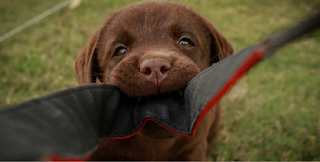One
of the best ways to help your dog live a healthier and longer life is
to get them vaccinated. Vaccines against infectious diseases must be
given when your pup is old enough to build immunity. Some of these
diseases are rabies, infectious hepatitis, distemper, parvovirus and
parainfluenza. On the other hand, vaccines for bordetella
bronchiseptica, coronavirus, giardia, Leptospirosis, and Lyme disease
are optional. This usually depends on the risk factors for
your dog and
the occurrence of the mentioned diseases in your area.
Leptospirosis
Bacterin
The
vaccine against Leptospira bacterins may help protect against two or
four of the most common subspecies of bacteria which causes
leptospirosis. The two-serovar bacterin can be combined into a DHPP
shot administered at dogs 12 weeks of age, the next of which is at 14
to 16 weeks of age. Most of the veterinarians administer the
four-serovar bacterin as a separate injection as early as 12 weeks,
the next of which is two to three weeks later.
Leptospira
bacterin has been reported to be responsible for 70% of
post-vaccination DHLPP anaphylactic shock reactions. Dogs and toy
breeds that are younger than 12 weeks old are believed to have the
highest rate of reactions to this bacterin. Also, the two-serovar
vaccines do not provide protection against the two species which is
responsible for the majority of cases recently. As such, routine
vaccination is considered optional now for dog owners. It is still
indicated in certain areas where the risk of contracting the disease
is higher than the risk of vaccination. The vaccine against
leptospirosis is not included in all combination vaccines, therefore
it can be given separately.
Companies
like Pfizer and Fort Dodge already have vaccines that covers all four
of the primary serovars of leptospirosis. These are called subunit
vaccines, and it poses a low risk of an allergic reaction to dogs.
Due to the rising cases of leptospirosis, this vaccine may be
recommended in more areas. Immunity following the vaccination usually
takes place four to six months after. As such, if vaccination
for puppies is essential, it may be recommended to revaccinate after
every six months. You can also ask your veterinarian to learn what
would be the best for your dog.
Canine
Parainfluenza
Parainfluenza
is the primary virus indicated in the kennel cough complex. By
getting this vaccine for dogs, it decreases the severity and
prevalence of the infection. However, the vaccine does not prevent
the disease. The vaccine for parainfluenza is combined into the
canine distemper-measles-parainfluenza and DHPP shots. The first dose
is given to dogs that are eight to twelve weeks of age, while the
second dose is given at 16 weeks. According to the guidelines of AAHA
2006, the vaccine should
be given at six to eight weeks of age. However, a lot of
veterinarians choose to wait until dogs are seven to eight weeks of
age before commencing vaccinations. An intranasal vaccine which
incorporate the vaccine for bordetella is also available.
The
injectable vaccine against parainfluenza helps protect dogs, but does
not completely eliminate the virus coming from nasal secretions. This
means that pups can still transmit the infection. The intranasal
vaccine provides protection against both infection and disease,
therefore eliminating the possibility of disease transmission to
other dogs.
Yearly
boosters of this vaccine are recommended by the manufacturer.
However, there have been evidences suggesting that the vaccine
against parainfluenza does not always give protection for the full 12
months. In many cases, the vaccine should be given twice a year,
especially for dogs that pose a higher risk.
Keep
in mind that this recommendation is applicable only for the
parainfluenza vaccine, and not for other viruses that are usually
included in a combination vaccine. Since this is not a core vaccine,
it must only be given to pups with lifestyles that increase their
risk, like dogs who will be boarded and show dogs.
Bordetella
(Noncore)
The
vaccine for bordetella bronchiseptica can help control kennel cough
as well as other respiratory infections caused by the bacteria. This
optional vaccine works best for dogs living in kennels, show dogs and
boarded dogs.
As
of the time being, there are two available vaccine types to help
prevent bordetella in pups. The first is an intranasal vaccine, and
the second one is an injectable vaccine. The intranasal vaccine that
helps protect dogs against bordetella and parainfluenza, provides the
most immediate immunity. However, either type of this vaccine is
ideally given at least a week before possible exposures.
The
injectable vaccine, on the other hand, should be given to dogs twice.
The first injections is administered to pups that are eight weeks of
age, which will be repeated two to four weeks later. Dogs that are
born in high-risk areas where bordetella is widespread can be given
the intranasal vaccine at three weeks of age.
Annual
boosters for this vaccine is also recommended by the manufacturer.
However, due to the short duration of immunity, semi-annual boosters
might be more advisable for dogs.
Lyme
Disease
The
vaccine for Lyme disease, also known as Borrelia burgdorferi, is only
recommended for dogs in areas with high risk. This includes dogs that
visit areas where Lyme disease is widespread, as well as areas with a
high risk of tick exposure.
The
killed bacterin is not that so much favored right now, and the
subunit vaccine which features OpsA antigen is the one more preferred
should the vaccine be needed for your dog.
The immunity of dogs from this vaccine can be determined from a
natural exposure. Tick control must be the first line of defense
against Lyme disease


